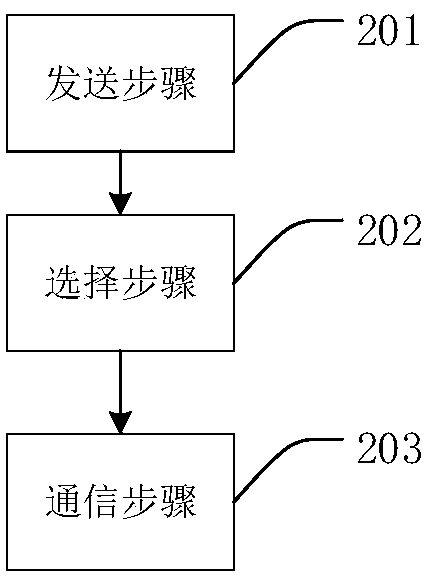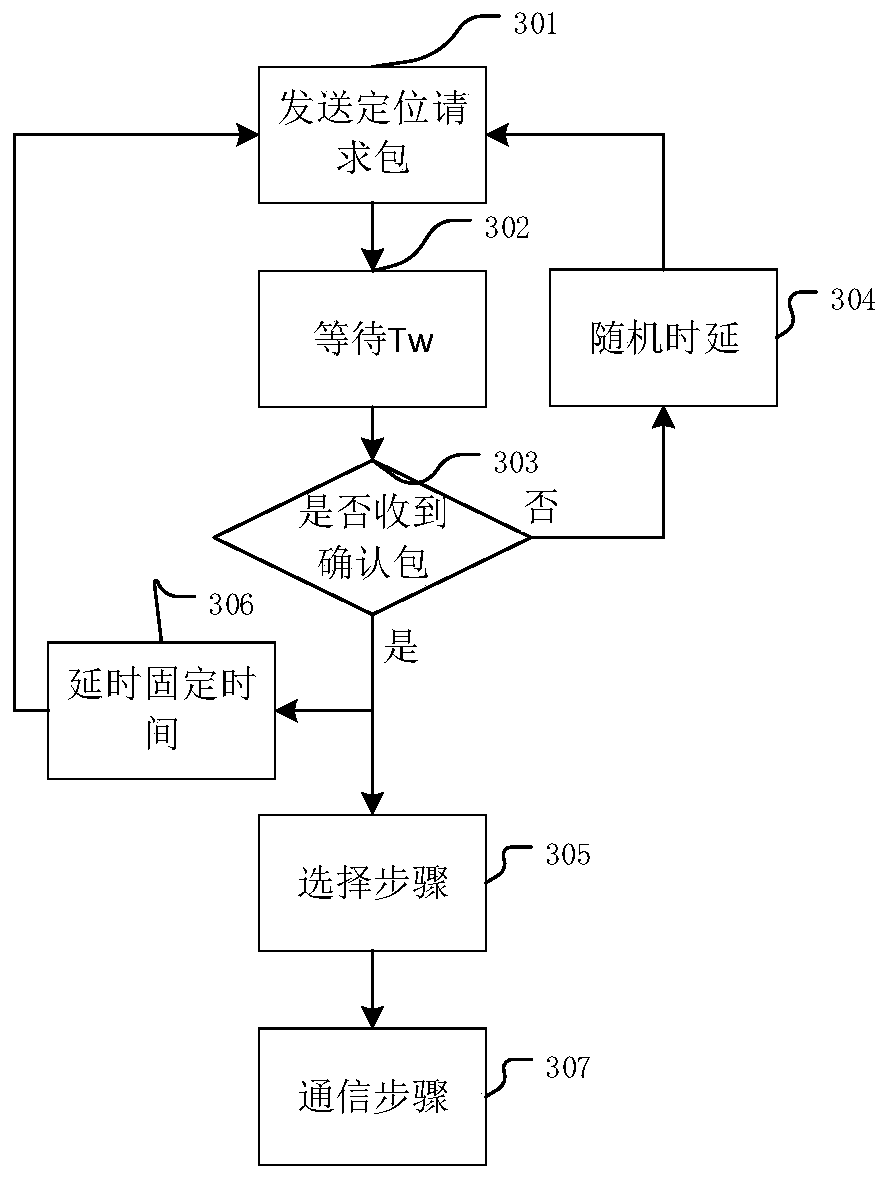Access method, mobile device and underwater sensor network system
An access method and underwater sensing technology, which are applied in the field of mobile devices and underwater sensor network systems, can solve the problems of difficult implementation of allocation algorithms, transmission failures, and reduced network throughput, so as to meet practical application requirements and provide strong support. Compatibility and flexibility, effect of low control signaling overhead
- Summary
- Abstract
- Description
- Claims
- Application Information
AI Technical Summary
Problems solved by technology
Method used
Image
Examples
no. 1 approach
[0039] figure 2 It is a flow chart showing the access method for the mobile node to access the underwater sensor network in the first embodiment.
[0040] In the sending step 201, the mobile node sends a positioning request packet to all fixed nodes in the underwater sensor network in a broadcast manner.
[0041] The network discovery is realized through the above sending step 201 . Specifically, the mobile node broadcasts a location request packet to all fixed nodes to discover the fixed nodes.
[0042] In order to flexibly cope with the influence of the movement of the mobile node, it is preferable to repeat the above sending step 201 every fixed time.
[0043]In the selection step 202, the mobile node selects the nearest fixed node as the relay node according to the confirmation packet returned from the fixed node that received the location request packet.
[0044] In the communication step 203, the mobile node sends a data packet for reporting its own status informatio...
no. 2 approach
[0047] image 3 It is a flow chart showing the access method for the mobile node to access the underwater sensor network in the second embodiment.
[0048] In step 301, the mobile node broadcasts a location request packet to N fixed nodes. Where N is the number of fixed nodes included in the underwater sensor network, and N is a natural number greater than or equal to 1.
[0049] In step 302, the mobile node waits for time T w .
[0050] Among them, the waiting time T w It can be preset as the time required to receive acknowledgment packets from all fixed nodes. Here, the waiting time T can be preset according to the path delay between the fixed node and the mobile node and the delay of each fixed node replying the acknowledgment packet w .
[0051] In step 303, the mobile node judges whether to receive an acknowledgment packet, if it is judged that no acknowledgment packet has been received ("No" in step 303), then enter into step 304, if it is judged to receive an ackn...
no. 3 approach
[0065] In the underwater sensor network, in order to avoid the collision of the confirmation packets replied by each fixed node, each fixed node delays a certain time to reply after receiving the positioning request packet. In the third embodiment, in order to avoid the collision of the acknowledgment packets, it is assumed that each fixed node delays nT after receiving the positioning request packet Δτ Reply, where n (0≤n≤N-1) is the number of a fixed node. For example, the delay times of fixed nodes 0, 1, 2, 3, 4, n... are 0, T respectively Δτ , 2T Δτ 、3T Δτ 、4T Δτ , nT Δτ ..., where T Δτ It is a fixed delay for fixed nodes to reply confirmation packets one by one. In order to ensure no collision, it is preferable to set T Δτ It is preset to be larger than the transmission time difference between the mobile node and any two fixed nodes.
[0066] In the third embodiment, the mobile node needs to receive the confirmation packets replied by all the fixed nodes, image ...
PUM
 Login to View More
Login to View More Abstract
Description
Claims
Application Information
 Login to View More
Login to View More - R&D
- Intellectual Property
- Life Sciences
- Materials
- Tech Scout
- Unparalleled Data Quality
- Higher Quality Content
- 60% Fewer Hallucinations
Browse by: Latest US Patents, China's latest patents, Technical Efficacy Thesaurus, Application Domain, Technology Topic, Popular Technical Reports.
© 2025 PatSnap. All rights reserved.Legal|Privacy policy|Modern Slavery Act Transparency Statement|Sitemap|About US| Contact US: help@patsnap.com



